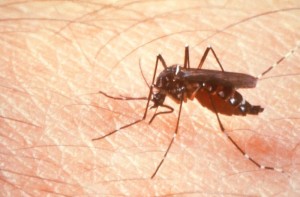The regional health agency Paca and the prefecture of Bouches-du-Rhône confirmed first indigenous cases of dengue in the Bouches-du-Rhône in Aubagne, according to an ARS Provence Alpes Cote d’Azur report (computer translated). This is the third locally acquired dengue fever case in France, earlier cases were reported in Var and Toulon. No epidemiological link has been found between the three cases.

The patient has since recovered from their illness.
The state services, ARS Paca, the Interdepartmental Agreement for mosquito control (EID) Mediterranean, local and doctors are highly mobilized to prevent the spread of the virus, through surveillance and mosquito control to protect communities populations.
The Bouches-du-Rhône is placed in Level 2 of the anti-national spread of chikungunya and dengue. Mosquito control actions are underway around the area of residence of the person infected.
Dengue fever is an infectious disease carried by mosquitoes and caused by any of four related dengue viruses. This disease used to be called “break-bone fever” because it sometimes causes severe joint and muscle pain that feels like bones are breaking.
People get the dengue virus from the bite of an infected Aedes mosquito. It is not contagious from person to person.
There are three types of dengue fever in order of less severe to most: the typical uncomplicated denguefever, dengue hemorrhagic fever (DHS) and dengue shock syndrome (DSS). Looking for a job in health care? Check here to see what’s available
The World Health Organization (WHO) estimates there may be 50–100 million dengue infections worldwide every year. However, new research from the University of Oxford and the Wellcome Trust, using cartographic approaches, estimate there to be 390 million dengue infections per year worldwide.

